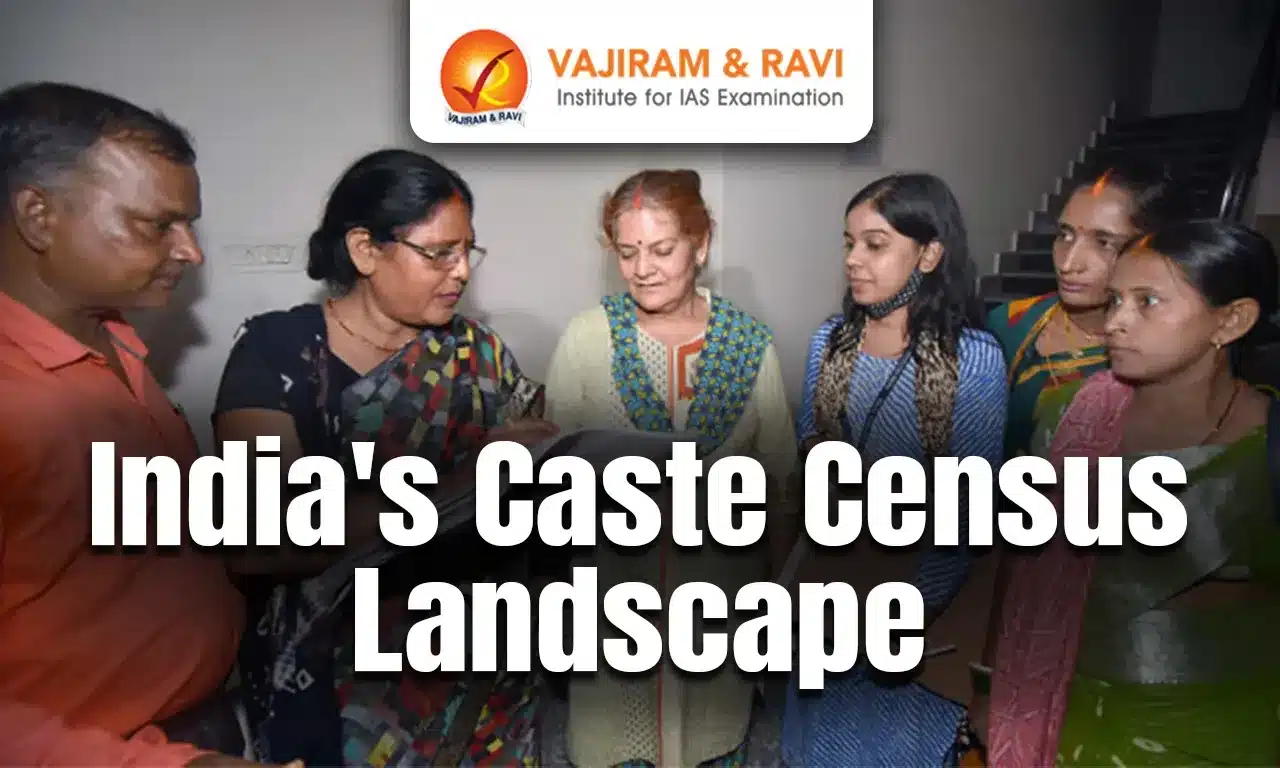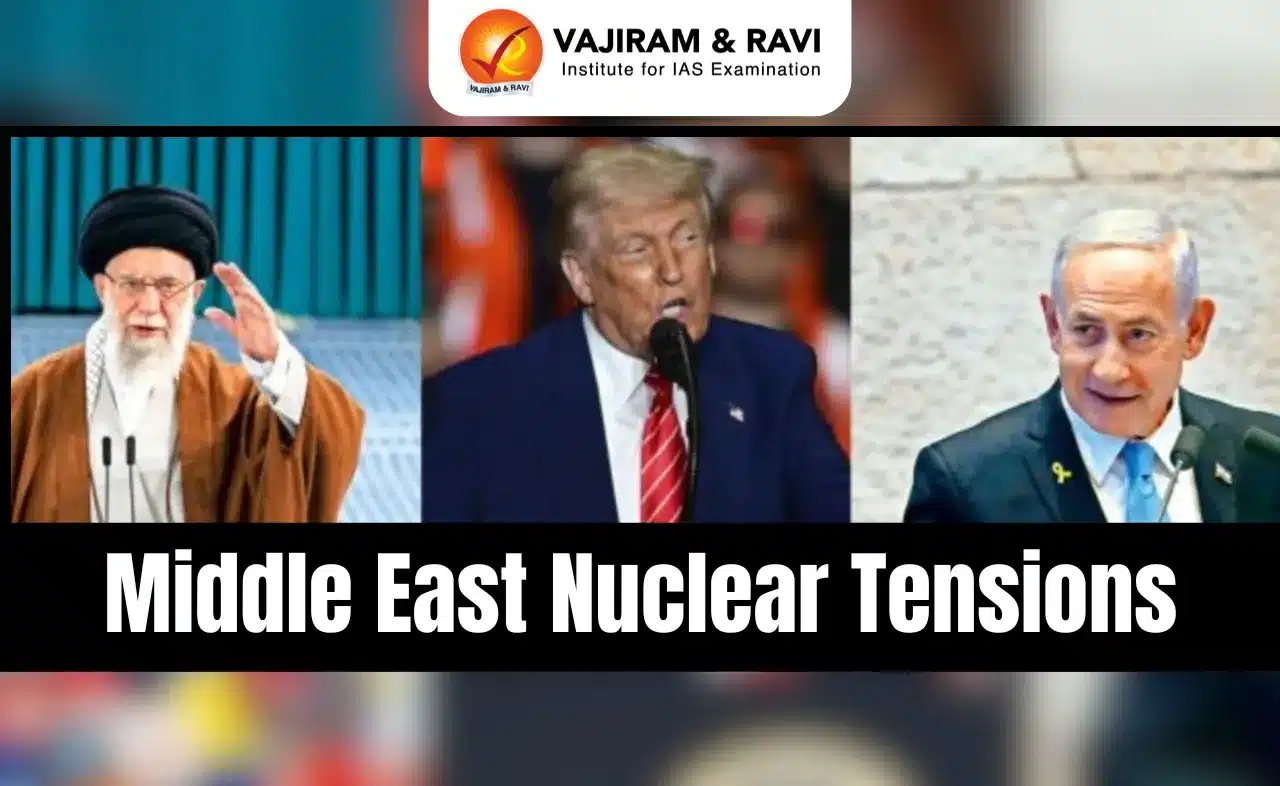What’s in Today’s Article?
- India’s Caste Census Landscape Latest News
- Background and Historical Context
- Socio Economic Caste Census (SECC), 2011
- Difference Between SECC 2011 and Census 2011
- Caste and Tribe Specific Data – SECC vs Census 2011 on Caste
- Conclusion
- India’s Caste Census Landscape FAQs
India’s Caste Census Landscape Latest News
- India has not published disaggregated caste data since the 1931 Census, creating a significant gap in understanding caste-based demographics.
- The Socio Economic and Caste Census (SECC) 2011 attempted to bridge this gap but it did not make certain caste-wise population data public.
Background and Historical Context
- The most recent publicly available data on caste populations at the national level are from the 1931 Census.
- It will serve as the baseline for the caste data that the government has now decided to collect as part of the upcoming, pandemic-delayed Census 2021.
- The 1941 Census collected caste data but it was not released due to World War II.
- Post-independence Censuses have not included disaggregated caste data, except for broad SC/ST figures.
Socio Economic Caste Census (SECC), 2011
- Overview:
- Beginning: The Union Ministry of Rural Development began the SECC on June 29, 2011 through a nationwide door-to-door enumeration exercise.
- Purpose:
- Assess socio-economic status of rural and urban households, and allow the ranking of households based on predefined parameters.
- The data to be used for policy, research, and the implementation of various development programs.
- Coverage: Conducted in 24 lakh enumeration blocks, each with ~125 households.
- Timeline: Mostly in 2011–2012; extended to 2013 in some states.
- Key features:
- Joint exercise with Census 2011, but administratively distinct.
- The caste census was under the administrative control of the Ministry of Home Affairs, through the Registrar General of India (RGI) and Census Commissioner of India.
Difference Between SECC 2011 and Census 2011
- Confidentiality and accessibility:
- Census 2011 data: Confidential and used for statistical purposes.
- SECC 2011 data: Open for government use in identifying beneficiaries for schemes.
- Common parameters:
- Demographic and economic data: Gender, age, marital status, religion, literacy, etc.
- Additional parameters in SECC:
- Health: Nature of disability (sight, speech, mental illness, etc.) and diseases (cancer, TB, leprosy).
- Economic status: Asset ownership (mobile, AC, fridge), housing condition, source of lighting, latrines, and kitchens.
- Employment and income (Urban-specific): Source of income (begging, vending, pension, rent).
- Rural-specific: Landholding, mechanised equipment, tribal group membership, bonded labour, manual scavenging.
Caste and Tribe Specific Data – SECC vs Census 2011 on Caste
- Census 2011: Only asked about SC/ST status, not specific caste names or OBC/general category.
- SECC 2011:
- Collected disaggregated caste data.
- Categories: SC (Code 1), ST (Code 2), Other (Code 3), No Caste/Tribe (Code 4).
- Captured name of caste/tribe if applicable.
- Government order on SC classification:
- As per 1990 order, Scheduled Castes must be Hindu, Sikh, or Buddhist.
- Scheduled Tribes can be from any religion.
Conclusion
- The upcoming Census 2021, delayed by the pandemic, is expected to include comprehensive caste data, potentially reshaping socio-economic policy frameworks.
- Accurate and transparent caste data remains critical for targeted welfare measures, inclusive governance, and evidence-based policymaking.
India’s Caste Census Landscape FAQs
Q1. What was the key difference in data confidentiality between Census 2011 and SECC 2011?
Ans. While data from Census 2011 is confidential and used only for statistical purposes, SECC 2011 data is accessible to government departments for welfare scheme implementation.
Q2. Why is the 1931 Census significant in the context of caste-based data in India?
Ans. The 1931 Census is the last publicly available source of disaggregated caste data at the national level, serving as a historical baseline.
Q3. Under which ministry was the caste component of the SECC 2011 conducted, and who executed it?
Ans. The caste component of SECC 2011 was under the Ministry of Home Affairs and conducted by the Registrar General of India (RGI).
Q4. What additional socio-economic indicators were included in SECC 2011 but not in Census 2011?
Ans. SECC 2011 included detailed information on disabilities, household assets, housing conditions, and occupation/income sources, especially in rural areas.
Q5. According to the 1990 Government Order, who is eligible to be classified under Scheduled Castes?
Ans. Only individuals professing Hinduism, Sikhism, or Buddhism can be classified as Scheduled Castes under the 1990 Government Order.
Source: IE
Last updated on June, 2025
→ UPSC Notification 2025 was released on 22nd January 2025.
→ UPSC Prelims Result 2025 is out now for the CSE held on 25 May 2025.
→ UPSC Prelims Question Paper 2025 and Unofficial Prelims Answer Key 2025 are available now.
→ UPSC Calendar 2026 is released on 15th May, 2025.
→ The UPSC Vacancy 2025 were released 1129, out of which 979 were for UPSC CSE and remaining 150 are for UPSC IFoS.
→ UPSC Mains 2025 will be conducted on 22nd August 2025.
→ UPSC Prelims 2026 will be conducted on 24th May, 2026 & UPSC Mains 2026 will be conducted on 21st August 2026.
→ The UPSC Selection Process is of 3 stages-Prelims, Mains and Interview.
→ UPSC Result 2024 is released with latest UPSC Marksheet 2024. Check Now!
→ UPSC Toppers List 2024 is released now. Shakti Dubey is UPSC AIR 1 2024 Topper.
→ Also check Best IAS Coaching in Delhi






















